Chance and Probability
Chance and Probability: Overview
This topic covers concepts, such as, Random Experiment, Possible Outcomes of a Random Experiment, Probability of an Event & Chances and Probabilities in Real Life etc.
Important Questions on Chance and Probability
Suppose you spin the wheel, find the probability of not getting a green sector
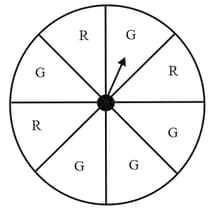
Suppose you spin the wheel, find the probability of getting a green sector
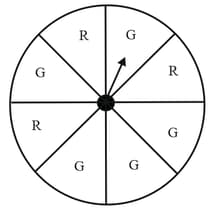
Suppose you spin the wheel, list the number of outcomes of getting a green sector and not getting a green sector on this wheel
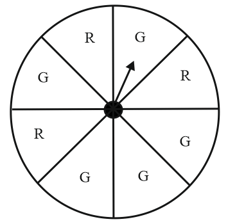
You have a bag with five identical balls of different colours and you are to pull out (draw) a ball without looking at it; list the outcomes you would get.
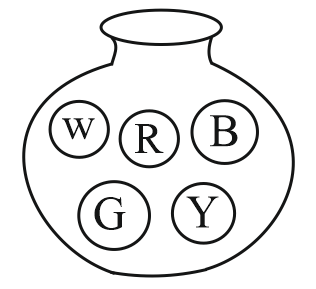
When you spin the wheel shown, what are the possible outcomes? List them.
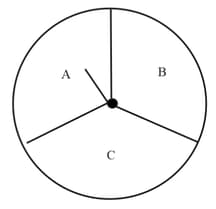
When a die is thrown, what are the six possible outcomes?
If you try to start a scooter, what are the possible outcomes?
When a die is thrown, what are the six possible outcomes?
If you try to start a scooter, what are the possible outcomes?
A dice is thrown once. Find the probability(in fraction) of getting an odd number.
Two players, and , play a chess match. It is given that probability of winning the match is . Find the probability of winning the match.
In a throw of a die, find the probability of getting a number less than .
A dice is rolled. What is the probability that the number appearing on its upper face is less than ?
Which number cannot represent a probability ?
A card is drawn at random from a pack of well shuffled playing cards. Find the probability that the card drawn is -
(1) an ace. (2) a spade.
A two-digit number is formed with digits without repetition. What is the probability that the number formed is
(1) an odd number ?
(2) a multiple of ?
There are tickets in a box, each bearing one of the numbers from to . One ticket is drawn at random from the box. Find the probability of event that the ticket drawn -
(1) shows an even number.
(2) shows a number which is a multiple of .
If two dice are rolled simultaneously, find the probability of the following events.
(1) The sum of the digits on the upper faces is at least .
(2) The sum of the digits on the upper faces is .
(3) The digit on the first die is greater than the digit on second die.
